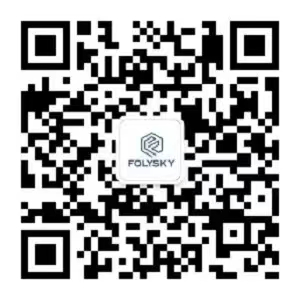 FOLYSKY(WuHan) LTD.
FOLYSKY(WuHan) LTD.
 FOLYSKY(WuHan) LTD.
FOLYSKY(WuHan) LTD.

RFID tags are composed of chips, antennas, and ceramic substrates. Label antennas are mainly divided into wire wound antennas, printed antennas, and etching antennas according to their production processes. Etching process is a traditional method in the semiconductor industry and is currently the main method for antenna manufacturing.
Etching methods: mainly divided into wet etching and dry wet etching. Wet etching uses acidic (alkaline) chemical liquids for coating and etching, or roller suspension immersion in the etching solution for etching, and finally removing the film or ink; The so-called dry etching is the process of etching surface atoms using gas combined with plasma technology, in which no chemical solution is used.
Etching process: First, press a layer of flat copper or aluminum foil on the upper layer of the aluminum nitride ceramic substrate of the antenna, and then apply a layer of photosensitive adhesive on the foil. Expose the foil layer using a positive plate with an antenna shape. The illuminated part of the photosensitive adhesive is washed off, and the metal underneath is exposed. These metals are etched and dissolved, leaving the coil on the aluminum nitride ceramic substrate as the antenna.
Aluminum nitride ceramic substrate: Made of specialized aluminum nitride ceramics for soft boards, combined with titanium metal for surface metallization treatment, and cured at high temperatures. Its dielectric properties, high temperature resistance, and corrosion resistance are strong. The cross-sectional view is as follows:

Applying photosensitive film/printing photosensitive ink: By rolling, a layer of photosensitive film is applied to the metal surface of the aluminum nitride ceramic substrate; Alternatively, a layer of photosensitive wet film can be printed on the metal surface of the ceramic substrate and dried before use. The cross-sectional diagram of the material composition is shown below:

Exposure: By using an automatic continuous exposure machine, the circuit diagram on the film is transferred to the photosensitive film through automatic alignment exposure. The cross-sectional view is as follows:

Imaging: Rinse off unexposed areas to reveal a circuit diagram covered by a photosensitive film. The cross-sectional view is as follows:

Etching: The exposed metal is etched away with an acidic solution. The cross-sectional view is as follows:

Film removal: Finally, remove the photosensitive film that protects the circuit and expose the metal circuit. The cross-sectional view is as follows:

Bearing materials: From the perspective of materials, they can be divided into aluminum nitride, aluminum oxide, silicon nitride, etc. Among them, PI antennas are mainly used for special environments such as high temperature and chemical resistance, while aluminum nitride ceramic antennas are mainly used for metal resistant electronic labels.
Difficulties in etching:
(1) At present, the connection of the etched aluminum antenna bridge adopts the riveting method. This method is easy to disconnect the riveted joint during the transfer and packaging process after the antenna is made, which leads to an open circuit of the antenna and poor functionality.
(2) Control of etching accuracy. The accuracy of etching can affect the performance of the antenna, and there are many factors that affect etching accuracy. The material, speed, method, and concentration of etching solution all affect the production process, so it is necessary to control each link.
The advantage of etching process is its simplicity and is currently the most widely used antenna production method. The antenna produced by etching technology can be used in the mass production of 13.56M, UHF bandwidth electronic tags. It has the advantages of fine circuit, low resistivity, good weather resistance, and signal stability.
Characteristics of Etched Antennas:
(1) The accuracy of the etched antenna circuit is high, and its line width can be controlled within ± 0.03mm, while the printed line width can only be controlled within ± 0.1mm. This etching antenna can better match the inquiry signal of the reader and writer due to its high accuracy and characteristics. At the same time, it has good impedance in the antenna and RF performance applied to objects.
(2) The smallest circuit of the etched antenna can reach 0.075mm, while the printed antenna can only reach 0.15mm. This allows for the production of smaller antennas, which are high-precision antennas, in limited space using etched antennas.
(3) The etching antenna has good flexibility, can be bent arbitrarily (up to tens of thousands of times), is resistant to high and low temperatures, moisture, strong corrosion resistance, and stable electrical performance, which can meet the needs of various conditions.
(4) Long usage time. Generally, printed RFID tags have a durability period of two to three years. But the etched RFID tags can last for more than ten years.

Follow us

customer service